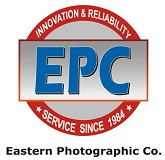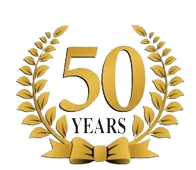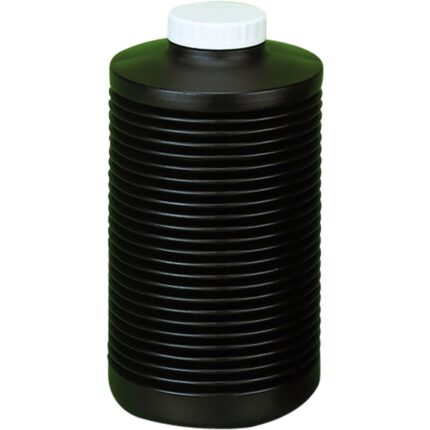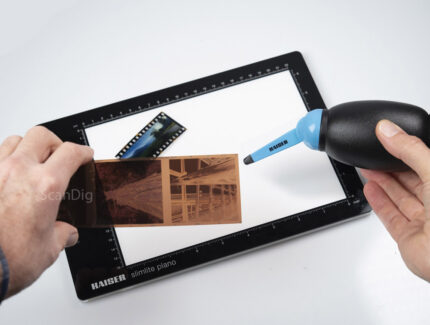Developing Tray High Quality (White) Size for Developing Photo Papers upto 12”x16”
This Developing Tray is made from durable, chemical-resistant plastic and comes in three colors to help identify chemicals under safelight. This listing is for a single white tray measuring 12 x 16″ (30.5 x 40.6 cm)—ideal for prints up to 11 x 14″. The tray features a base designed for solution efficiency and easy print removal, along with a pouring lip for drip-free emptying. Available individually or in sets of 3 (one of each color).
- Top Brand
- Free Delivery
- Secure Payment
₹1,815.00 Original price was: ₹1,815.00.₹1,650.00Current price is: ₹1,650.00.
Introduction:
Primary Uses of a photo developing tray
The primary purpose of a developing tray is to hold chemical solutions for processing exposed photo paper. After exposing the paper under an enlarger, it’s placed in the tray with developer to bring out the latent image. The paper is then moved to a second tray with stop bath to halt the development, followed by a third tray with fixer to make the image permanent. This three-step process is the core of analog darkroom printing, with developing trays playing a crucial role in it.
How to Uses
A Developing Tray is used in darkroom photography to process photographic prints. It holds various chemical solutions such as developer, stop bath, and fixer, which are essential for developing exposed photo paper. During the developing process, the photo paper is placed in these trays one after the other. Each tray allows the paper to react with a specific chemical for a set amount of time. This step-by-step chemical treatment helps in turning the latent image on the exposed paper into a visible and permanent photograph.
How to Use a photo developing tray
To use a photo developing tray, pour the required chemical solution into it—starting with the developer. Submerge the exposed photo paper in the tray and gently agitate it to ensure even coverage. After the recommended time, transfer the paper to the next tray (stop bath), and then to the fixer tray. Once the process is complete, rinse the print with clean water and allow it to dry. Each chemical should be used in a separate tray to avoid contamination.
Useful Links
-
Related Darkroom Trays
https://onestopphoto.in/product/tray-high-quality-white-size-for-developing-photo-papers-upto-12×16-set-of-3/ -
Stop Bath for Darkroom Printing
https://onestopphoto.in/product-category/darkroom-chemistry/stop-bath/ -
Film & Photo Paper Fixer
https://onestopphoto.in/product-category/darkroom-chemistry/fixer/ - Black & White Photo Papers
https://onestopphoto.in/product-category/photo-paper/bw-paper/
Useful Links
-
Darkroom Printing Process – Wikipedia
https://en.wikipedia.org/wiki/Darkroom -
Photographic Paper – Understanding How It Works
https://en.wikipedia.org/wiki/Photographic_paper -
Film Developing Process (Silver-Based Photography)
https://en.wikipedia.org/wiki/Photographic_processing
Why This Tray is Essential for Every Darkroom
Whether you’re printing black & white photographs at home or working in a professional lab, this developing tray ensures consistent, safe, and clean results. Its size, build quality, and user-friendly design make it an excellent choice for photographers who value precision and efficiency. The white color is especially helpful for viewing chemical reactions clearly under safelight, enhancing accuracy during development.
In addition to developing prints, a photo developing tray has several other uses in the darkroom. It can act as a print washing tray, rinse prints after fixing, or be used for mixing small batches of chemicals. The tray is also ideal for toning prints or applying special effects. For large-format photography, it can be used for sheet film development. It helps organize workflow with color coding and can store darkroom tools safely. The tray is also a valuable resource in photography workshops and can be repurposed by artists for creative processes like paper marbling or dye soaking.
This high-quality white developing tray is perfect for photo papers up to 12×16 inches. It’s a must-have for any darkroom setup. Learn more about darkroom equipment and the photo development process on Wikipedia.
Available Options
This listing includes one white tray. However, trays are also available in sets of three (white, red, and grey) to help photographers organize their workflow more effectively. Our New Product- https://onestopphoto.in/product/tray-high-quality-white-size-for-developing-photo-papers-upto-12×16-set-of-3/
FAQ SECTION
1. What is the main purpose of a photo developing tray?
A photo developing tray is used to hold darkroom chemicals such as developer, stop bath, and fixer. It allows even chemical coverage on the exposed photo paper to develop a clean and consistent print.
2. Can I use the same tray for all chemicals?
No. Each chemical must be kept in a separate tray to avoid contamination. That’s why trays are available in different colors—so photographers can easily distinguish between developer, stop bath, and fixer.
3. What print sizes can this developing tray handle?
This high-quality tray supports prints up to 11×14 inches and is designed to fit within a 12×16-inch layout, making it perfect for common darkroom paper sizes.
4. Is the tray chemical-resistant and durable?
Yes. It is made from hard, chemical-resistant plastic, ensuring long-lasting performance even with frequent use of strong darkroom chemicals.
5. What are the benefits of using a white tray?
A white tray improves visibility under a safelight, making it easier to monitor the development process and see tonal changes clearly while adjusting print exposure or development time.
6. Can this tray be used for other darkroom tasks?
Absolutely. Besides developing, it can be used for washing prints, toning, chemical mixing, sheet film development, or even creative processes like marbling and dye soaking.
Conclusion
The high-quality 12×16″ white developing tray is an essential tool for any darkroom setup, whether you are a beginner learning the basics of print development or a professional photographer working with precision. Its durable, chemical-resistant plastic construction, smooth base design, and easy-pour lip ensure clean, consistent, and efficient workflow during every print session. The white color enhances visibility under safelight, helping you monitor development accurately and avoid mistakes.
With multiple applications—from developing prints to washing, toning, and mixing chemicals—this tray remains one of the most reliable and versatile darkroom accessories. Whether used individually or as part of a three-tray color-coded system, it ensures a seamless and organized print-making experience.
If you’re building or upgrading your darkroom, this developing tray is a must-have for achieving professional-quality results every time.
Related products
-
Kaiser Accordion Bottle – Reliable, Safe Storage (4199)
Dark Room Equipment₹4,290.00Original price was: ₹4,290.00.₹3,900.00Current price is: ₹3,900.00. -
Kaiser Typhoon Air Blower – Reliable Camera Cleaner | 1 Piece
Dark Room Equipment₹1,640.00Original price was: ₹1,640.00.₹1,490.00Current price is: ₹1,490.00. -
Kaiser Darkroom Safelight 4018 – Reliable 220V for B/W Paper
Kaiser₹7,865.00Original price was: ₹7,865.00.₹7,150.00Current price is: ₹7,150.00. -
Kaiser Germany Universal Film Tank – Heavy-Duty with 2 Spools Code: 4297
Dark Room Equipment₹5,995.00Original price was: ₹5,995.00.₹5,450.00Current price is: ₹5,450.00.







